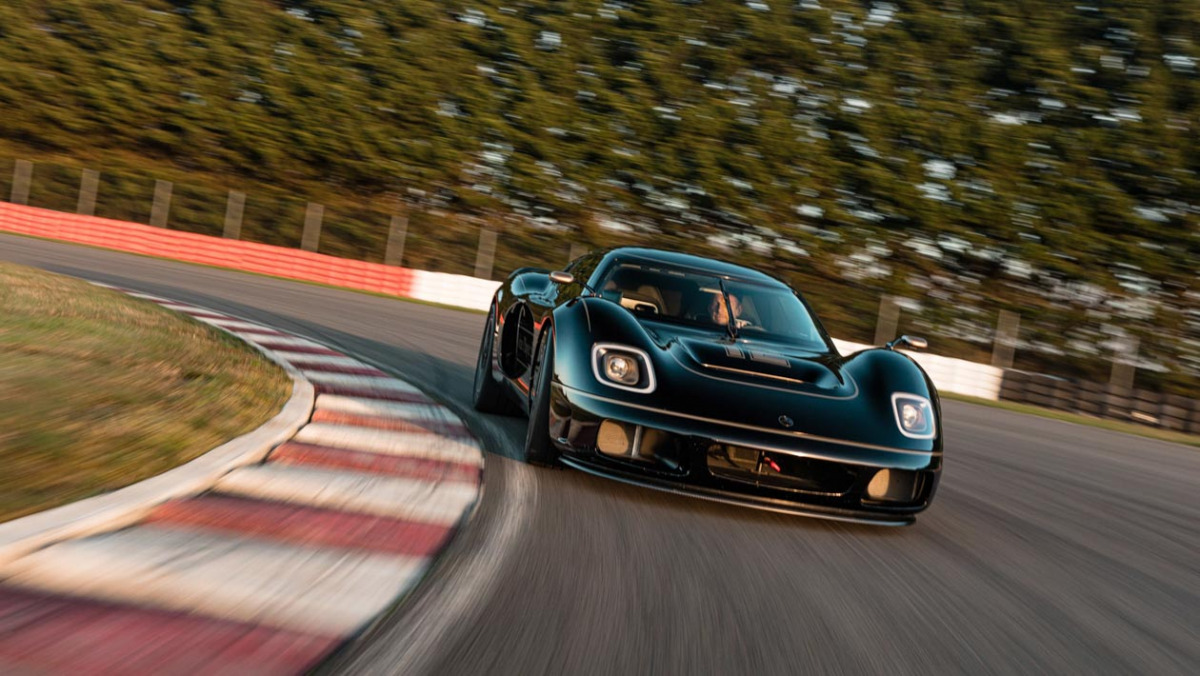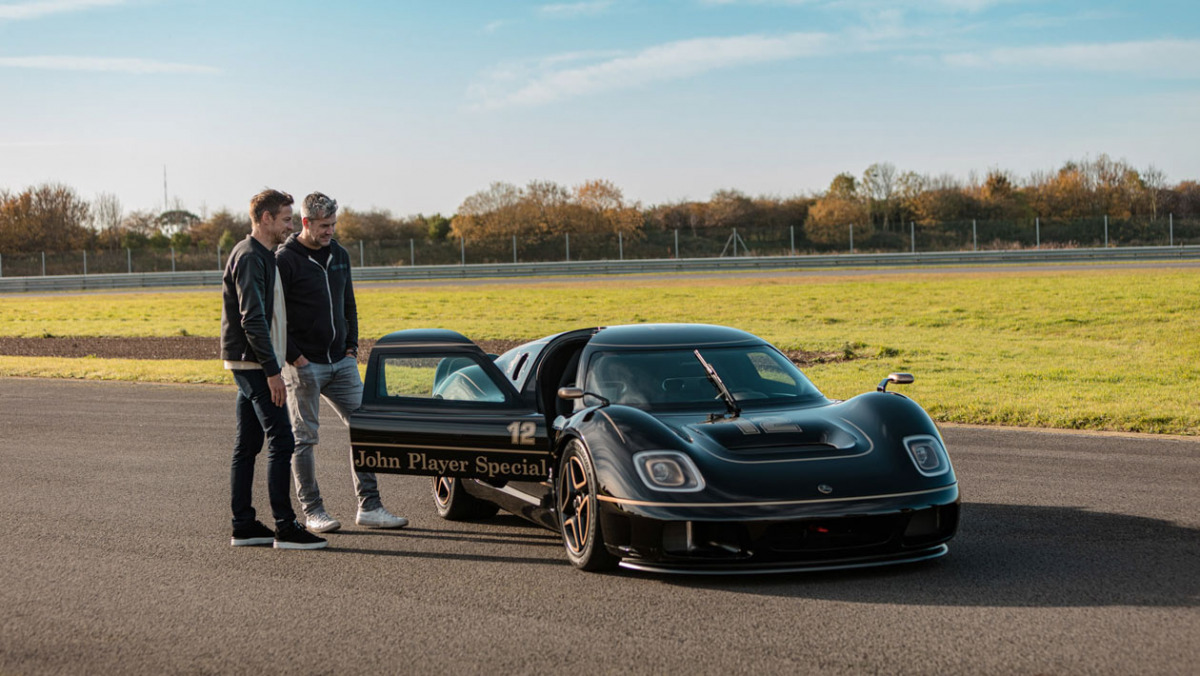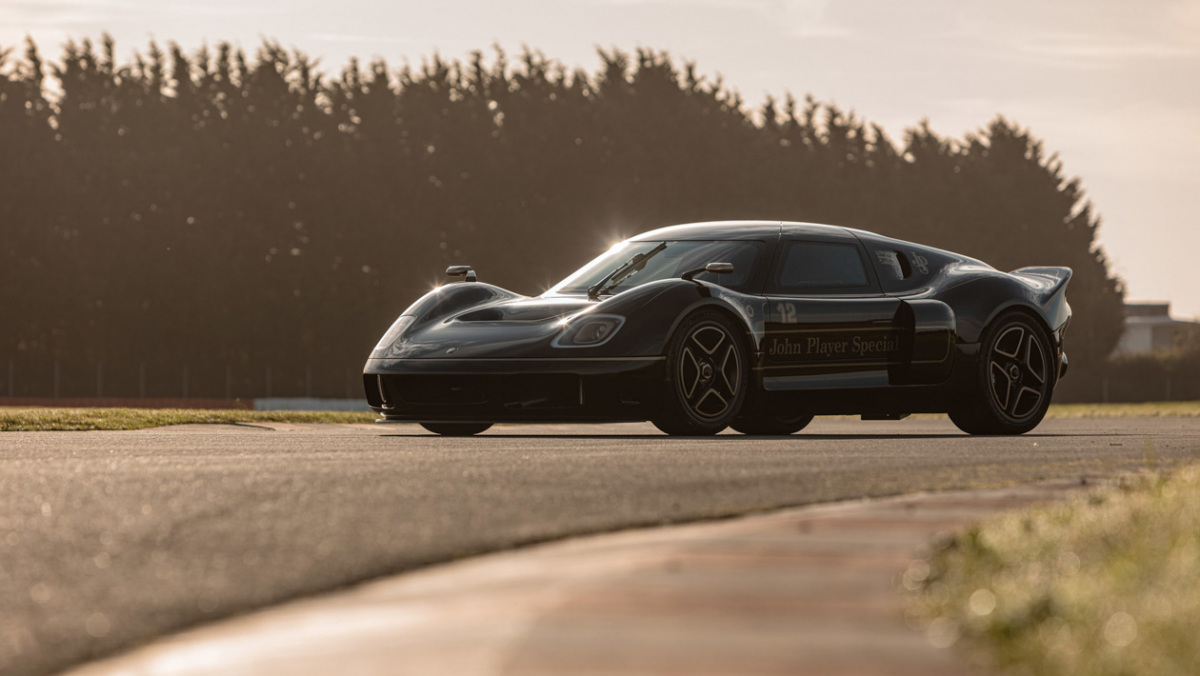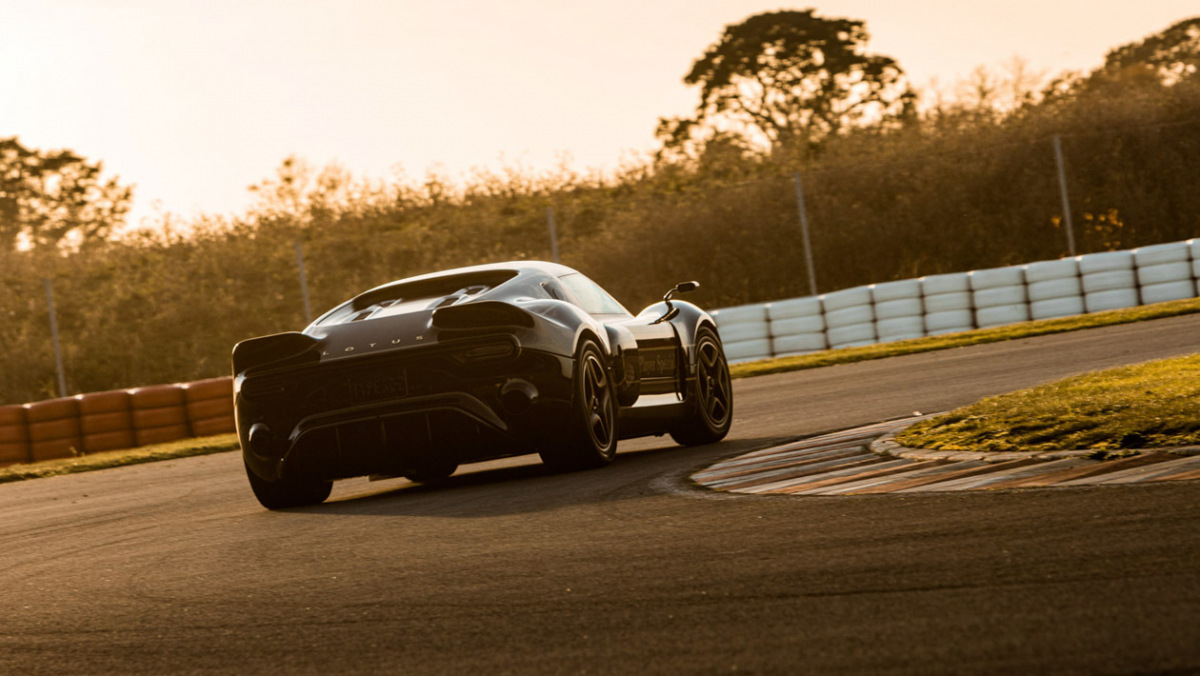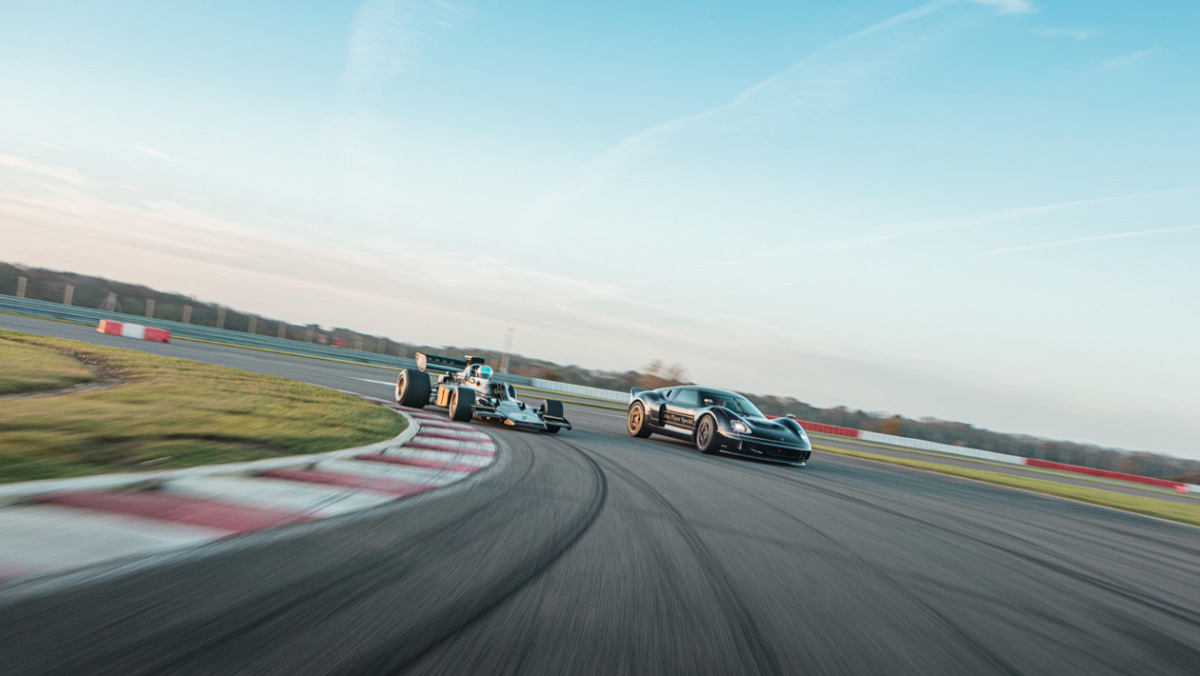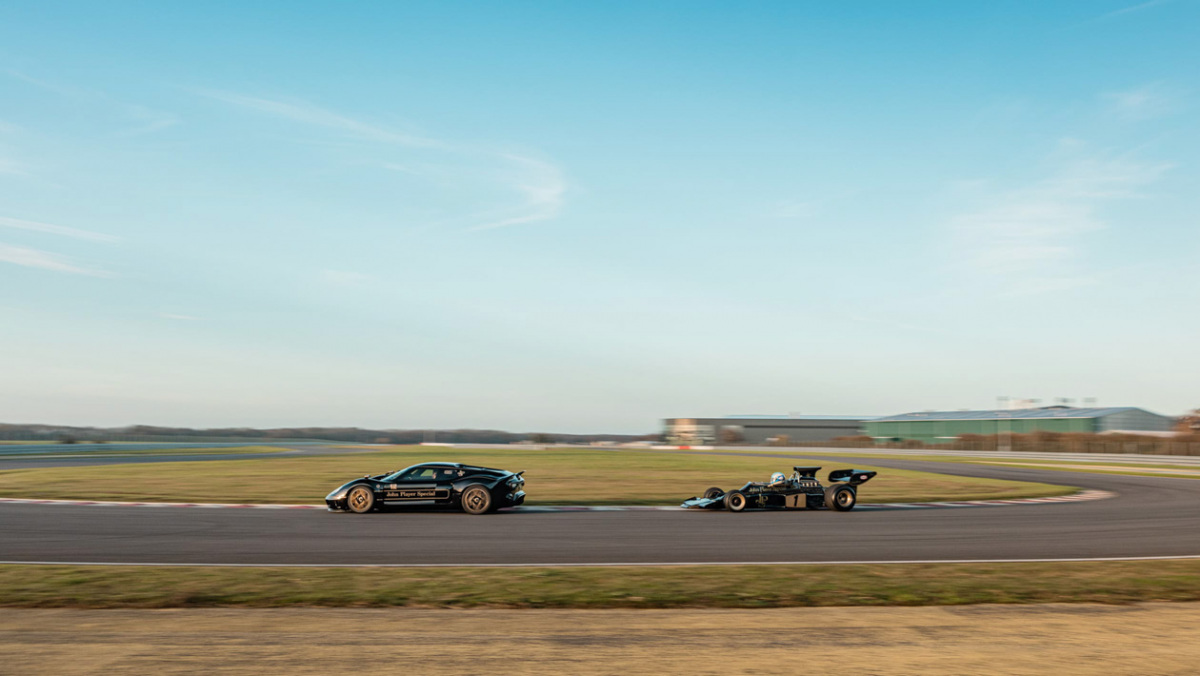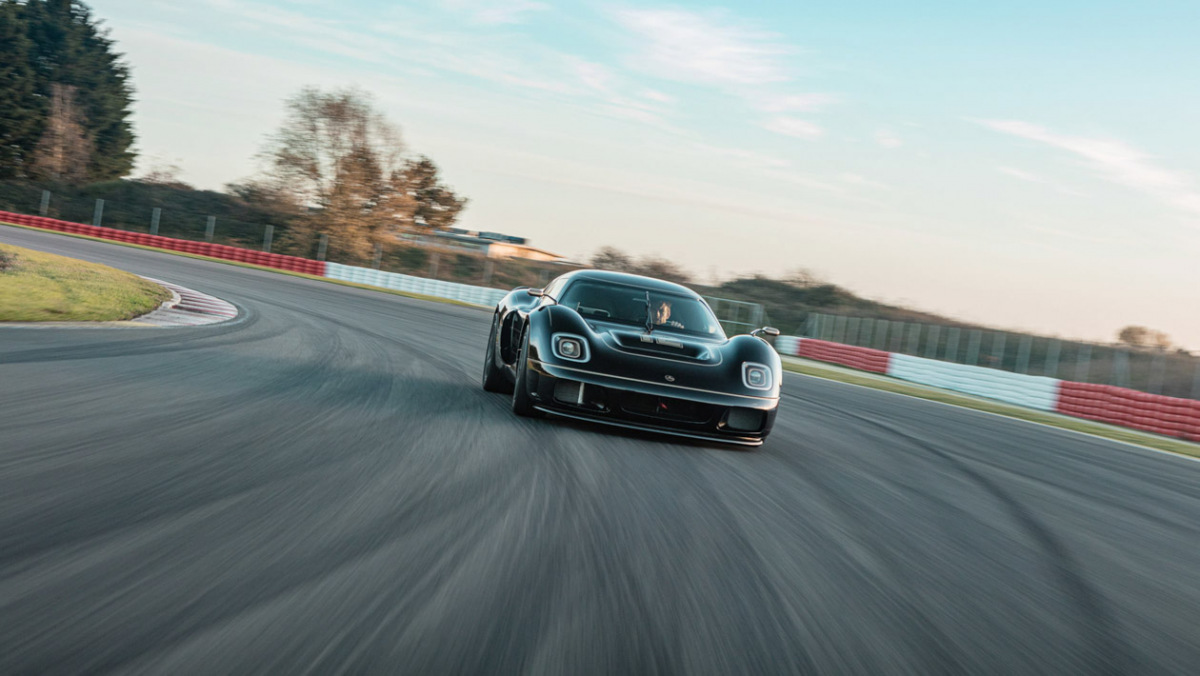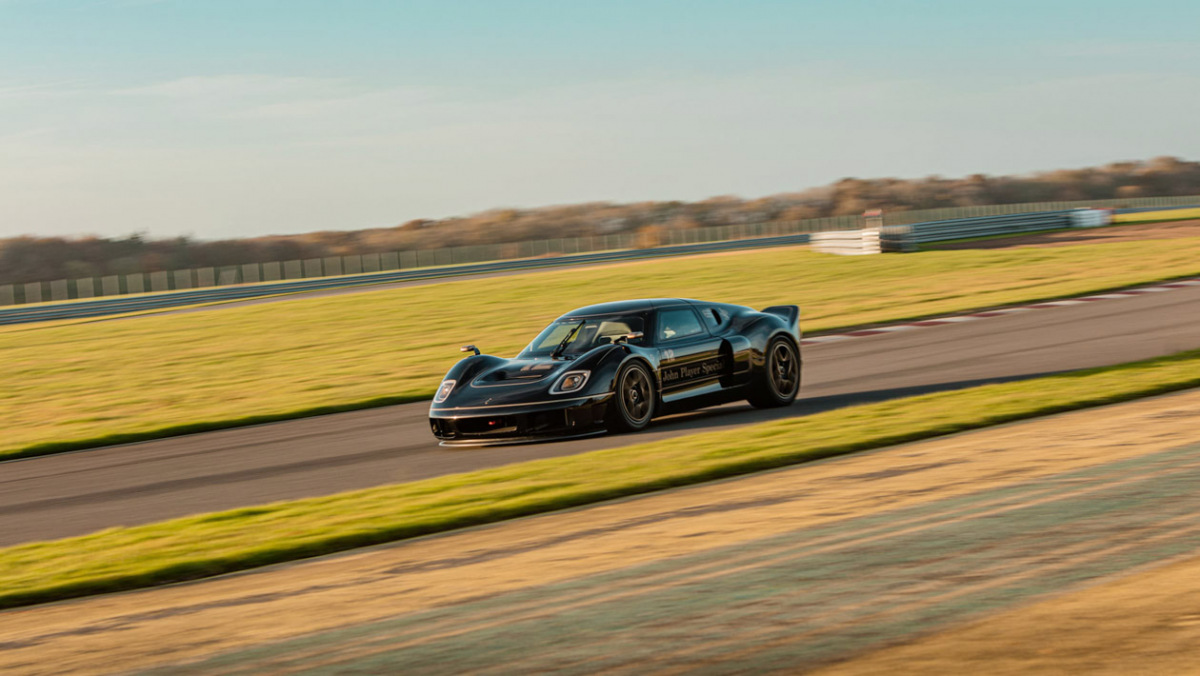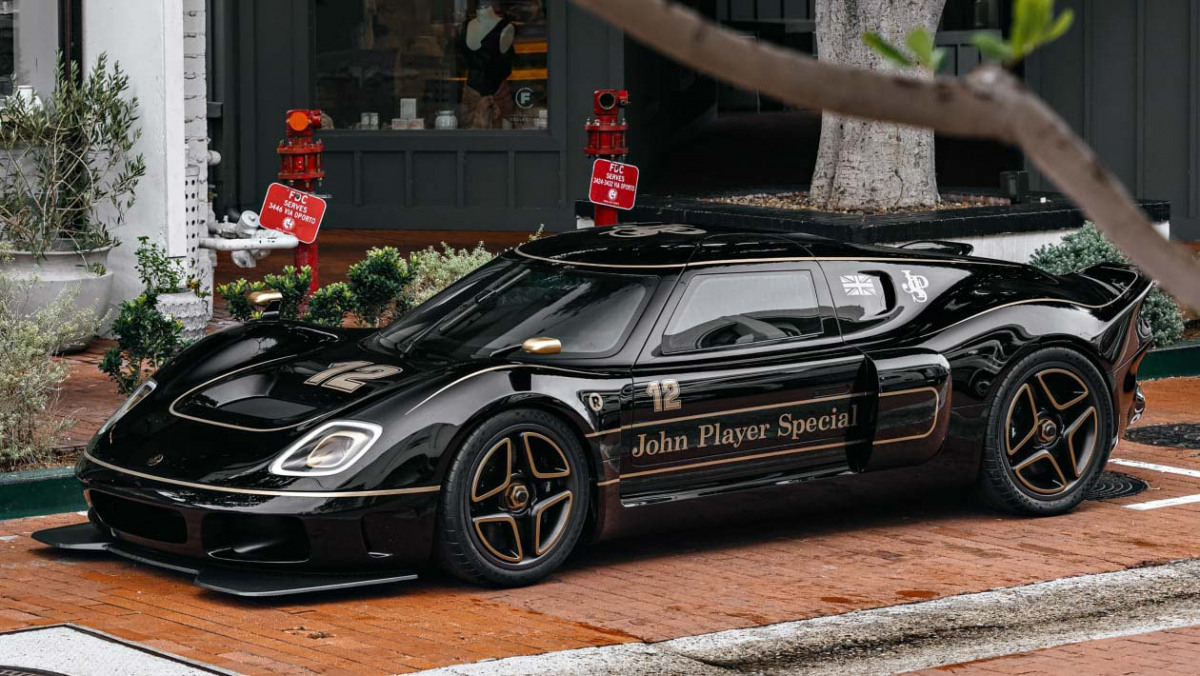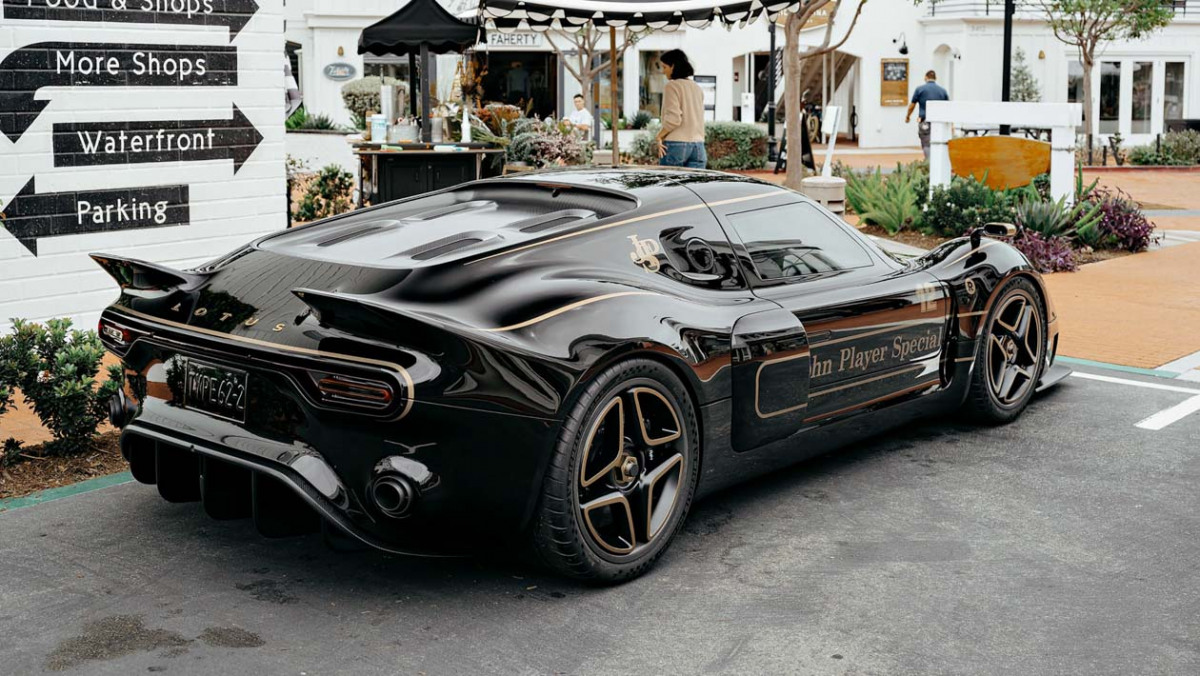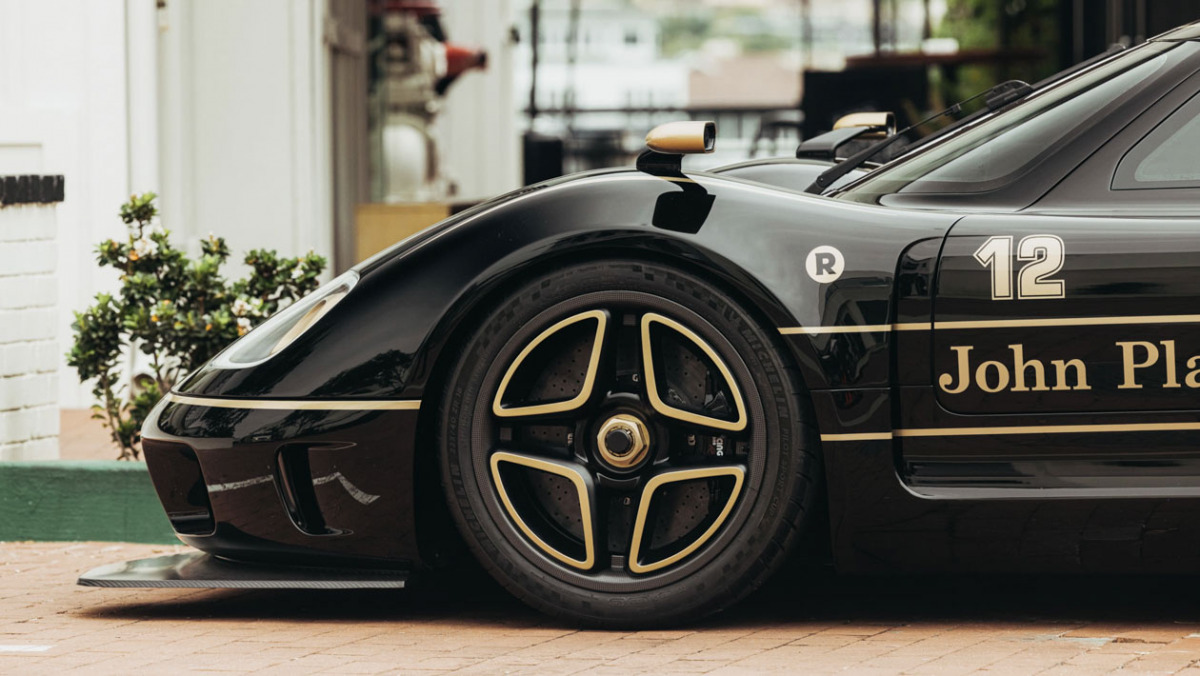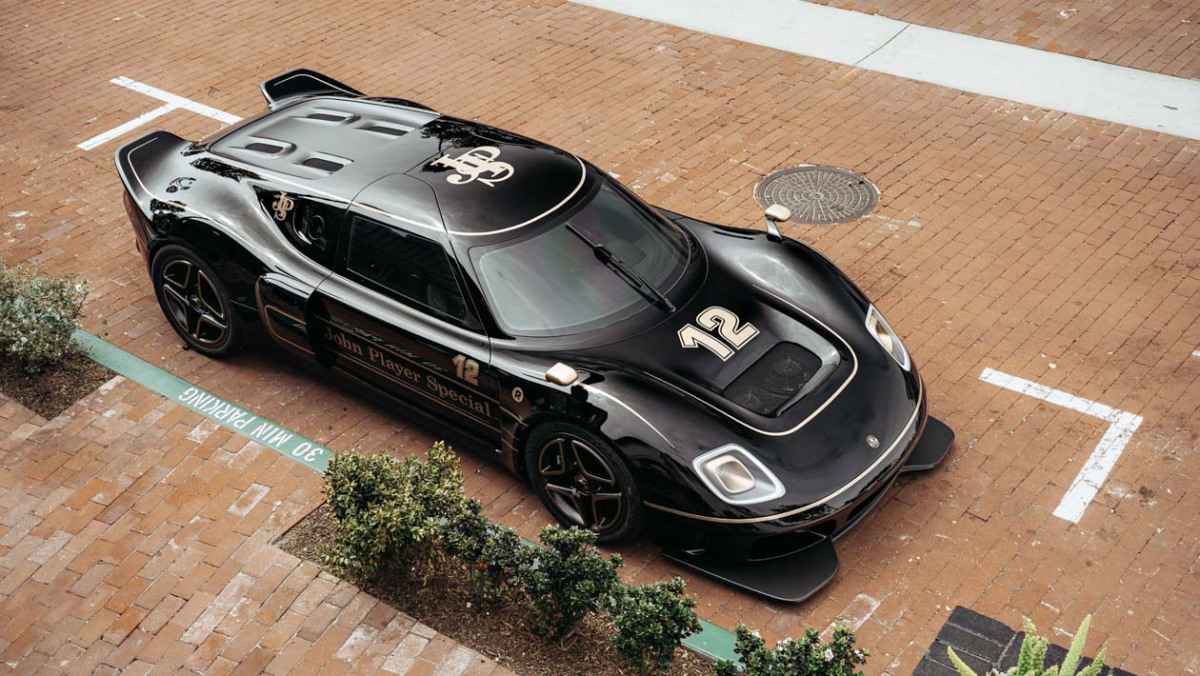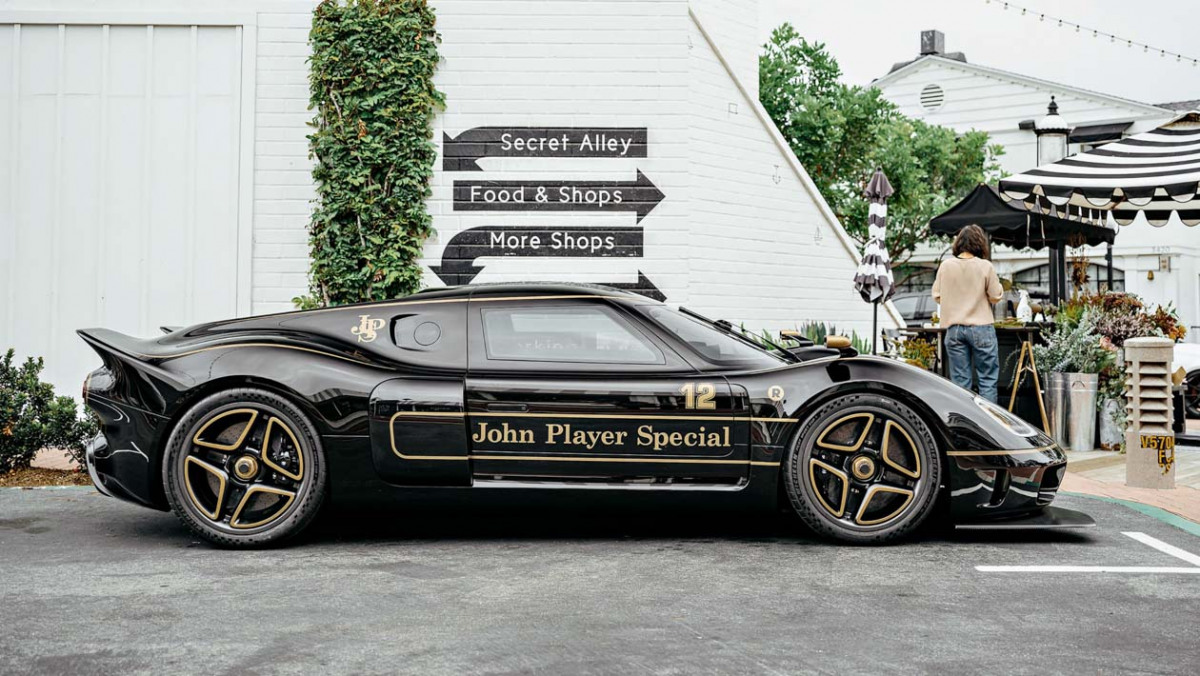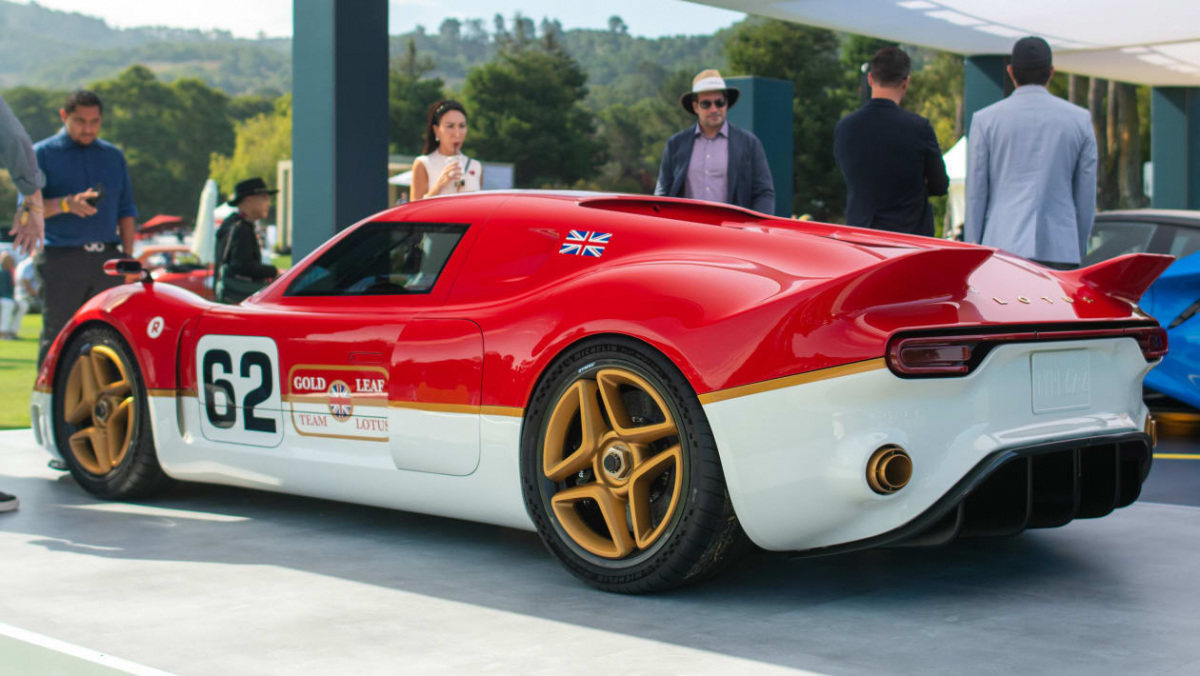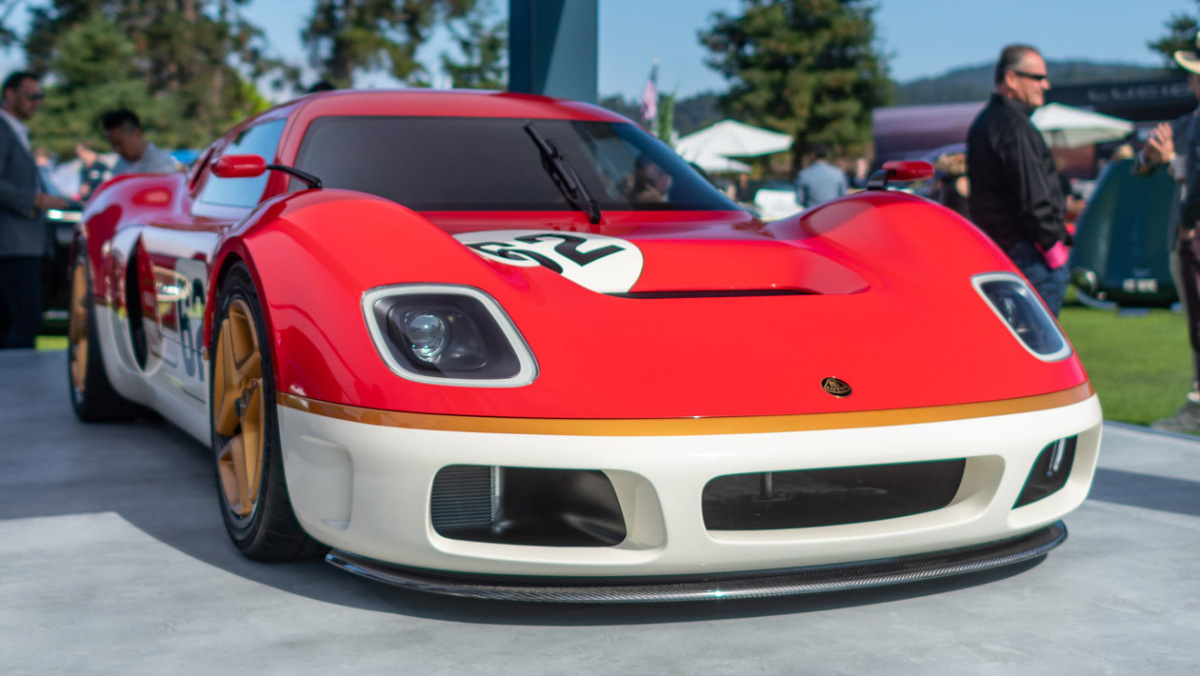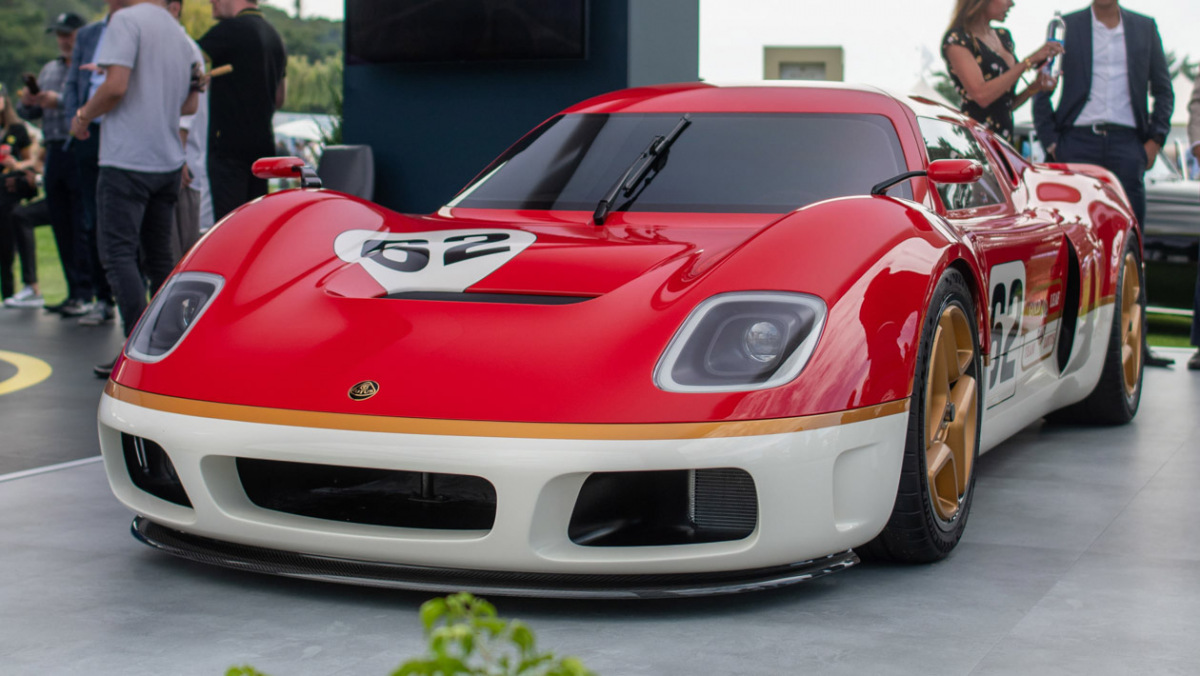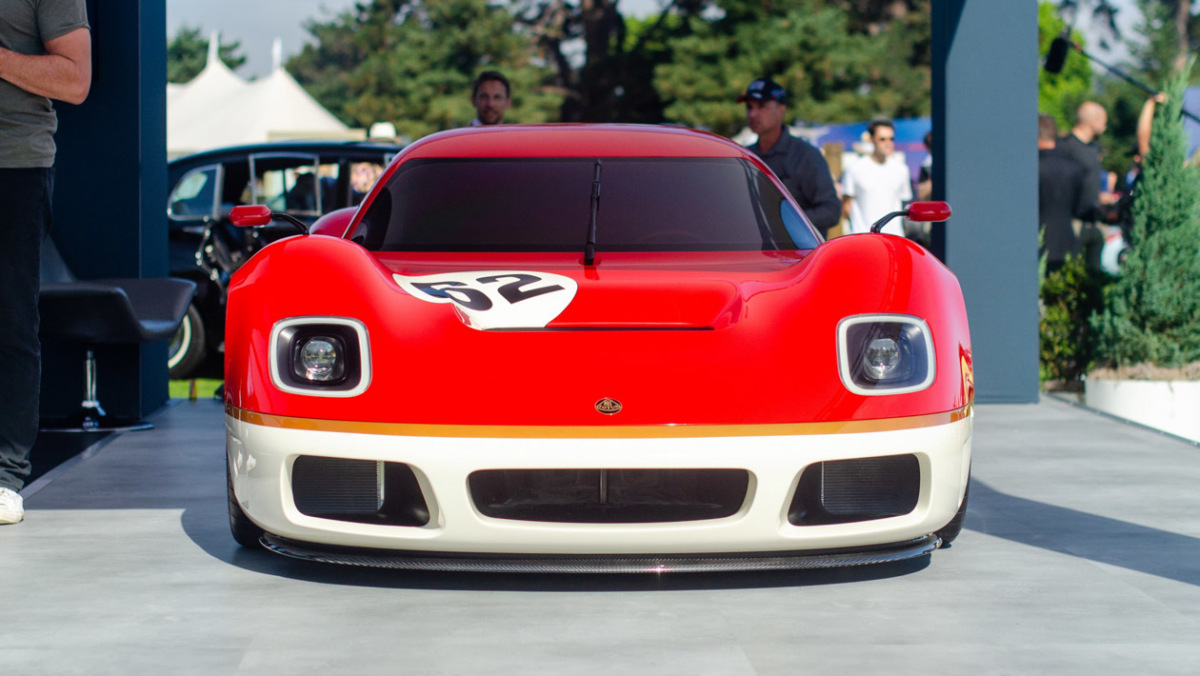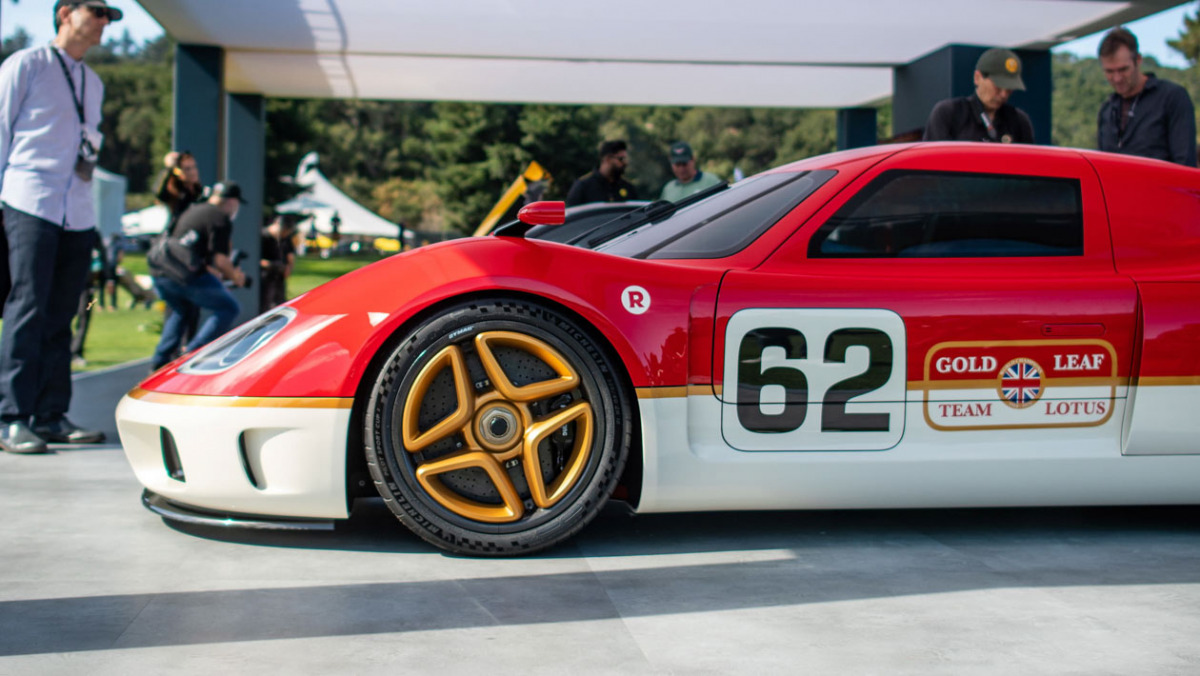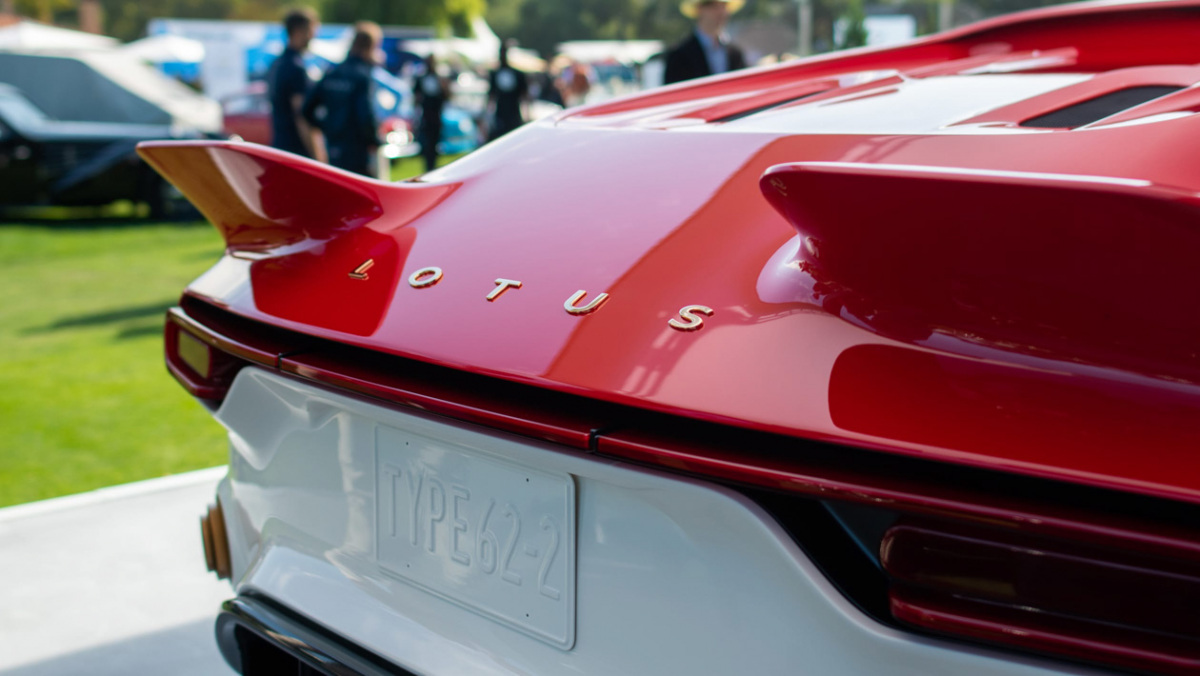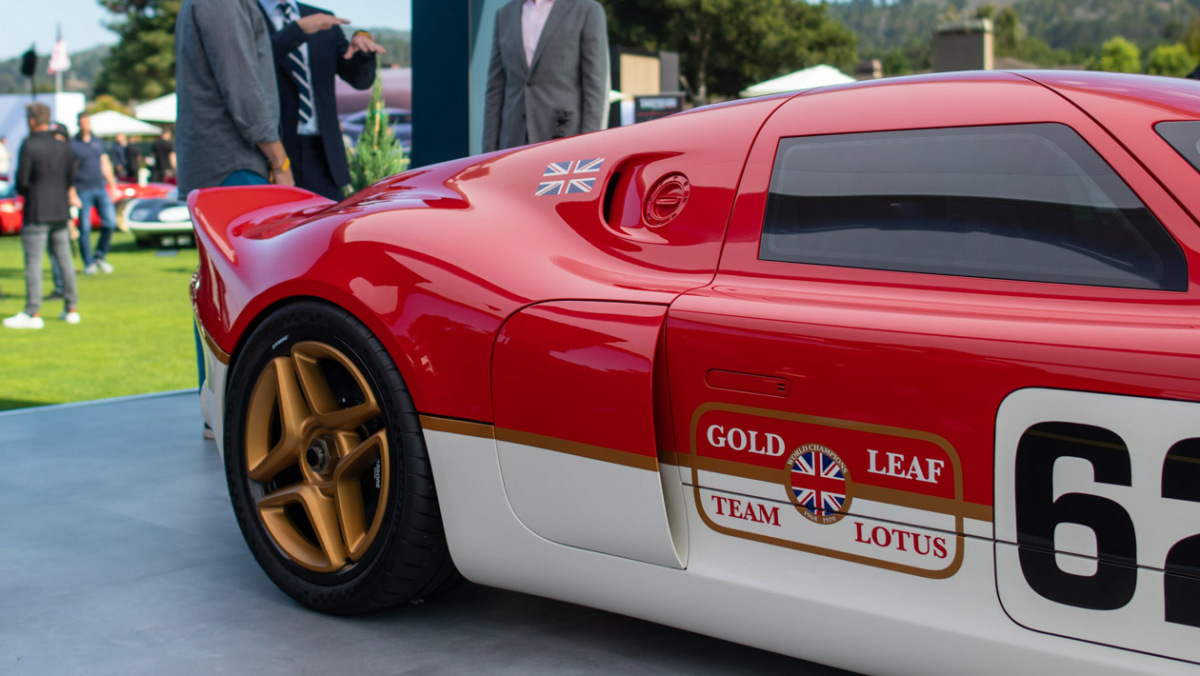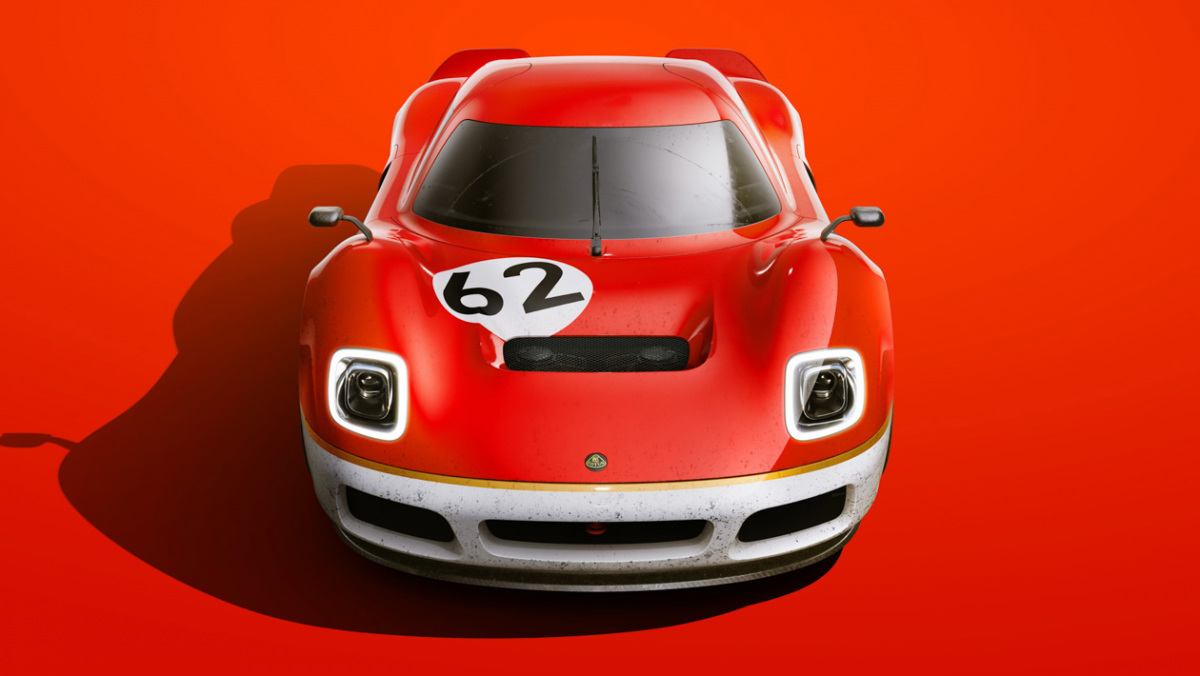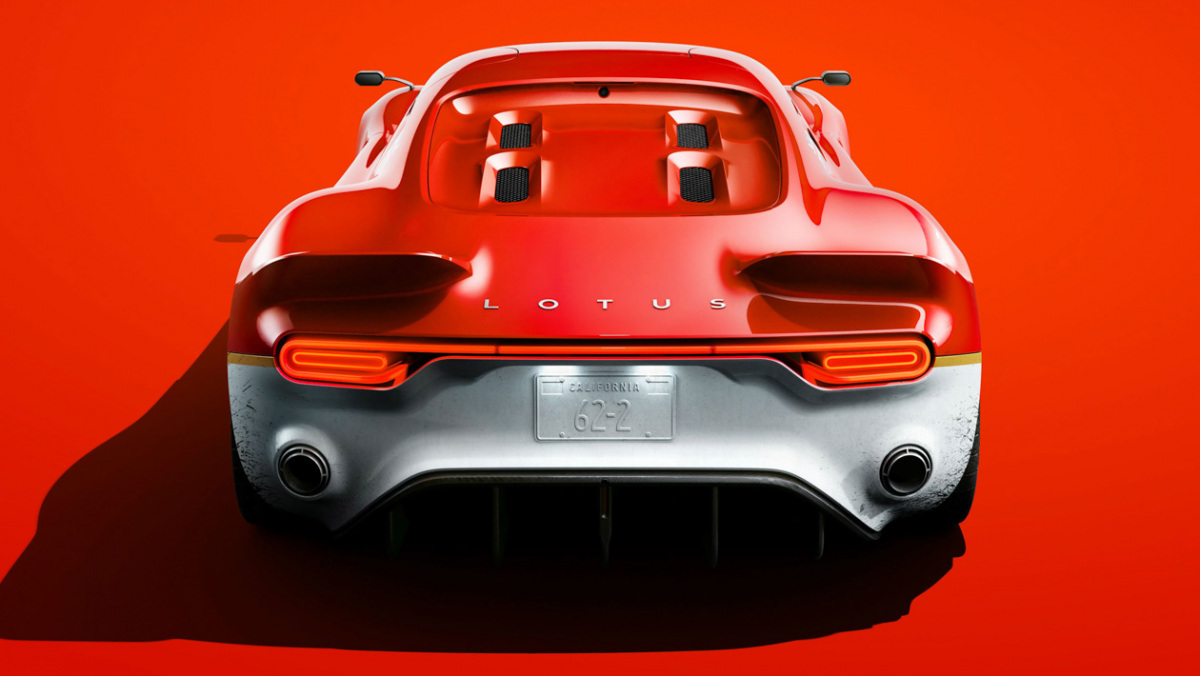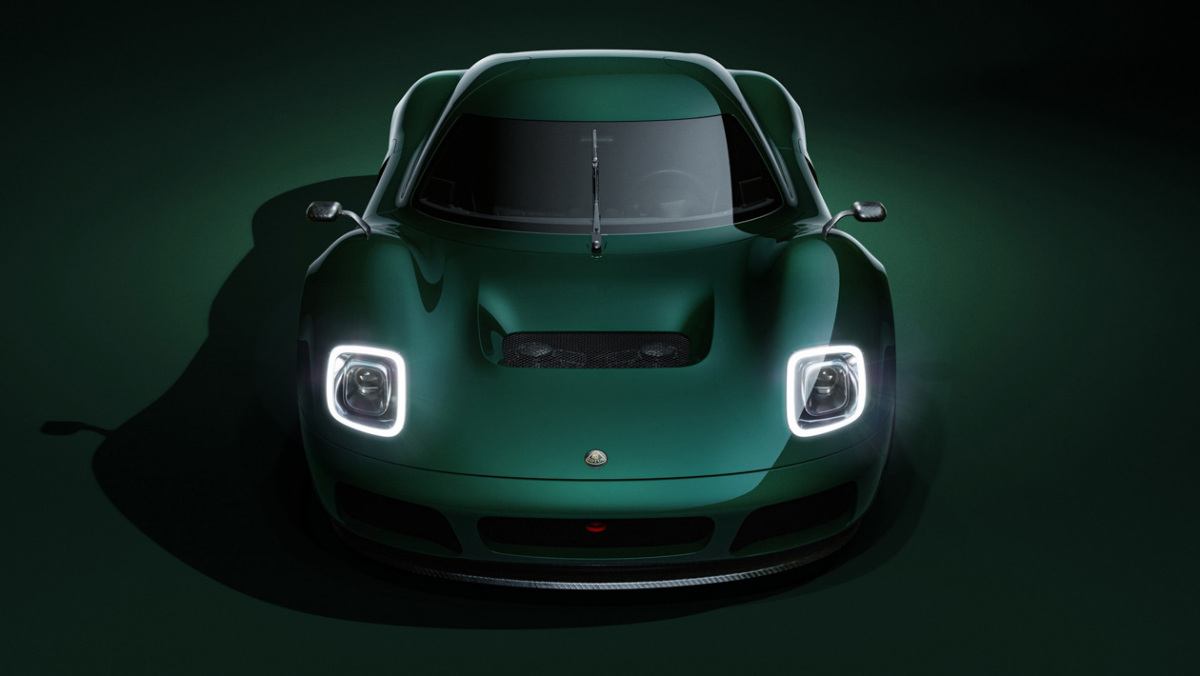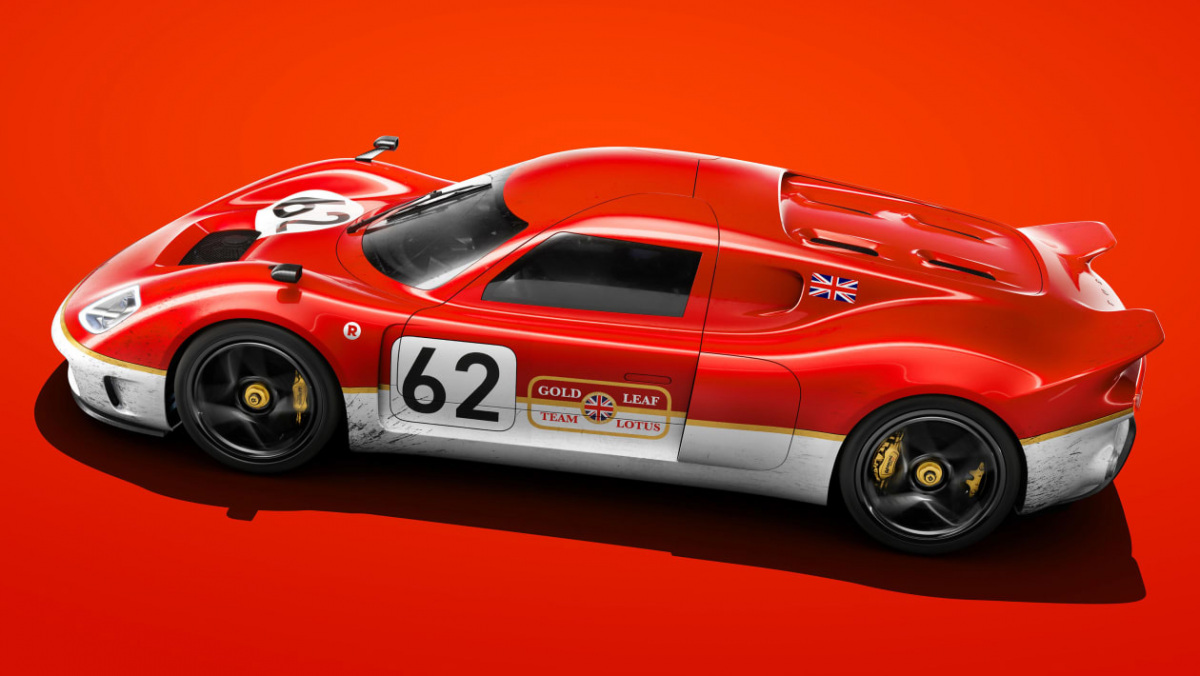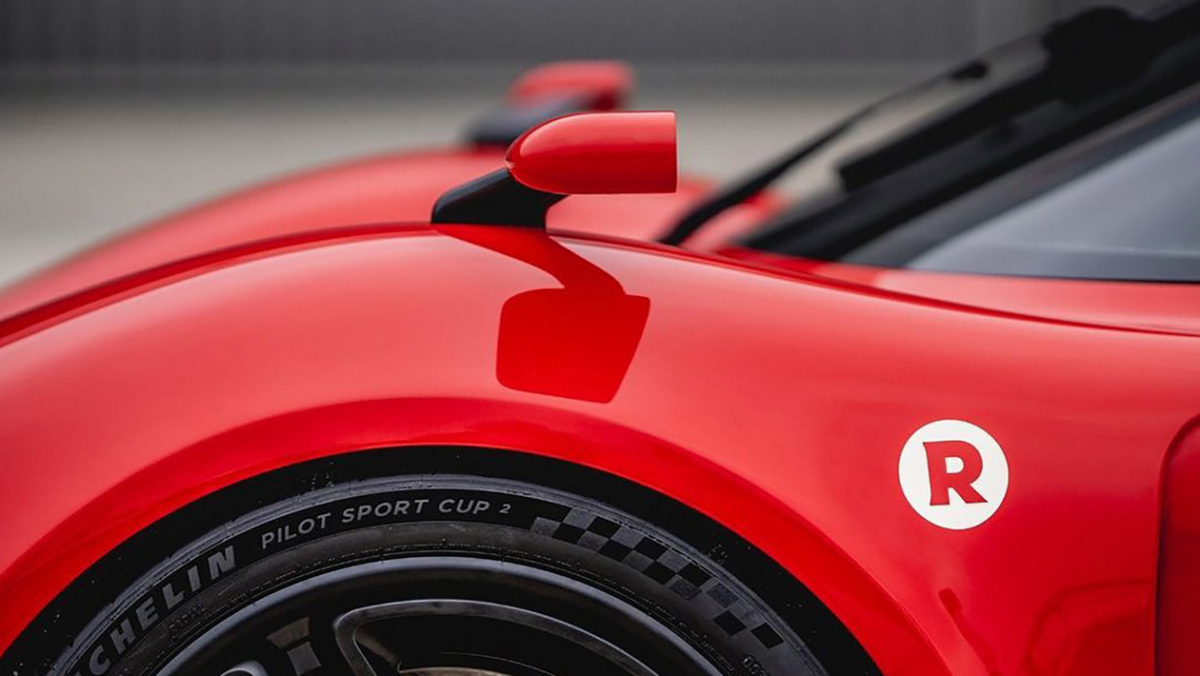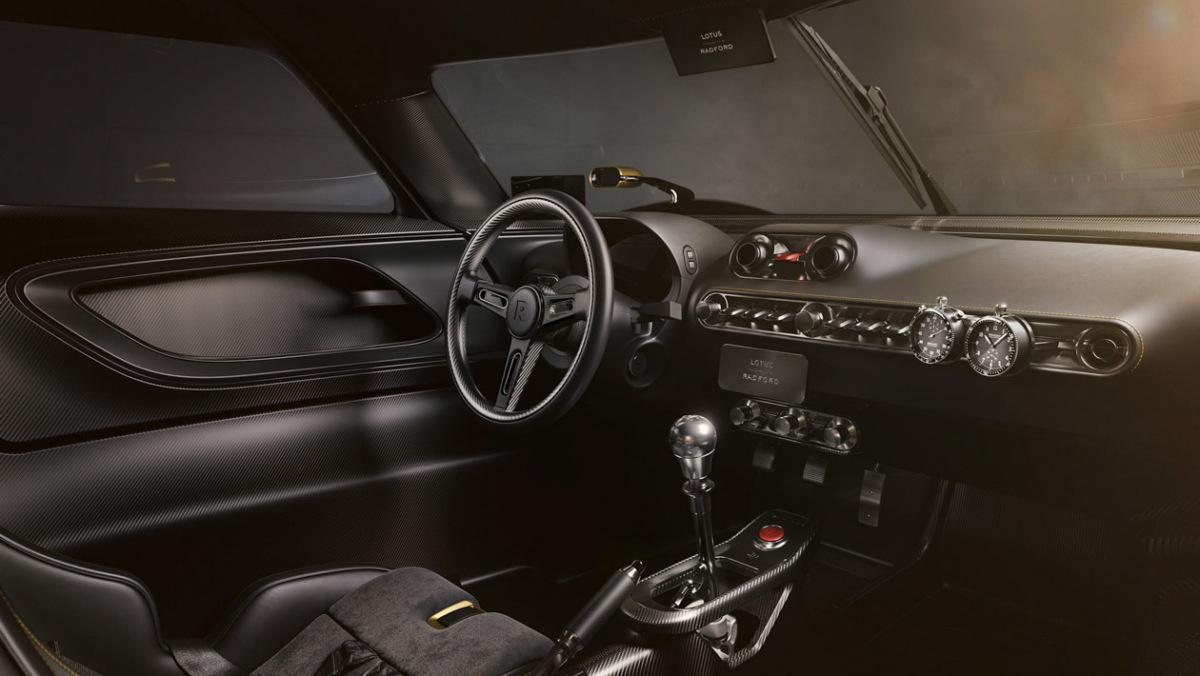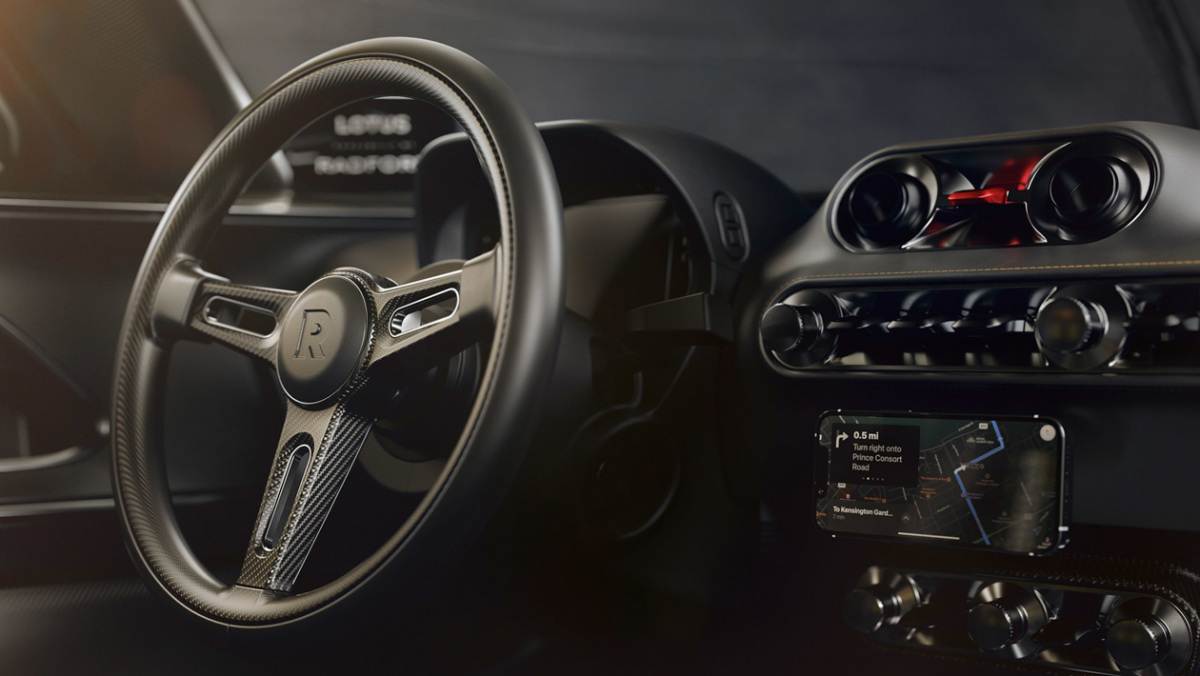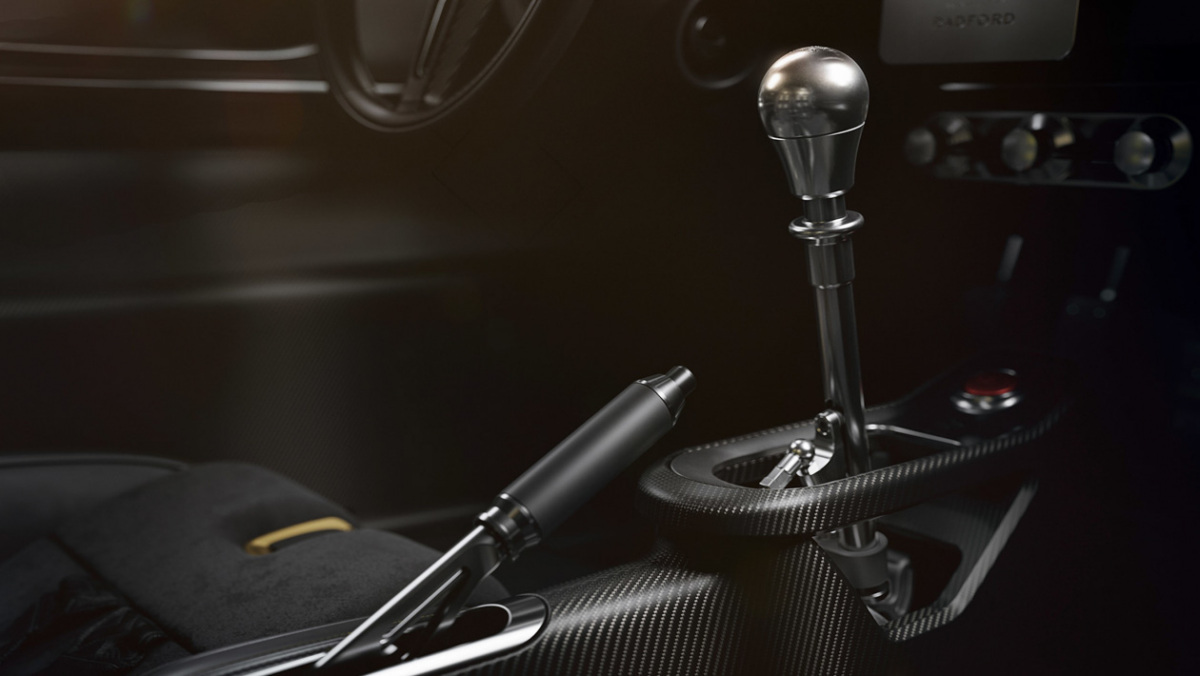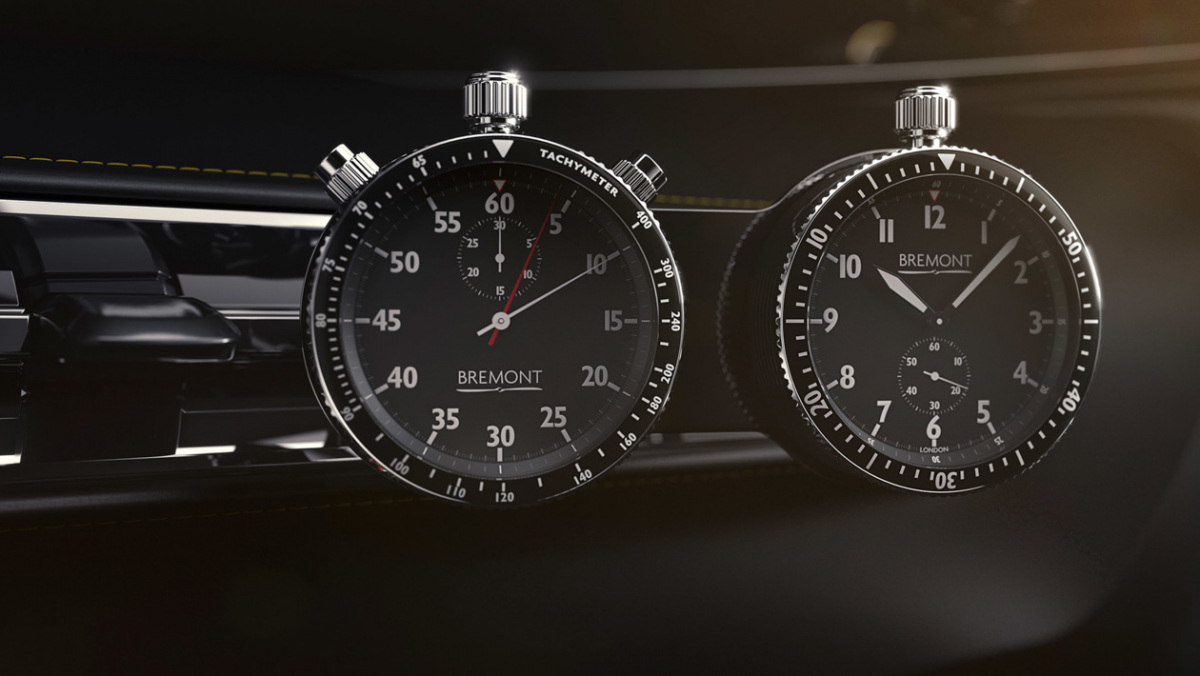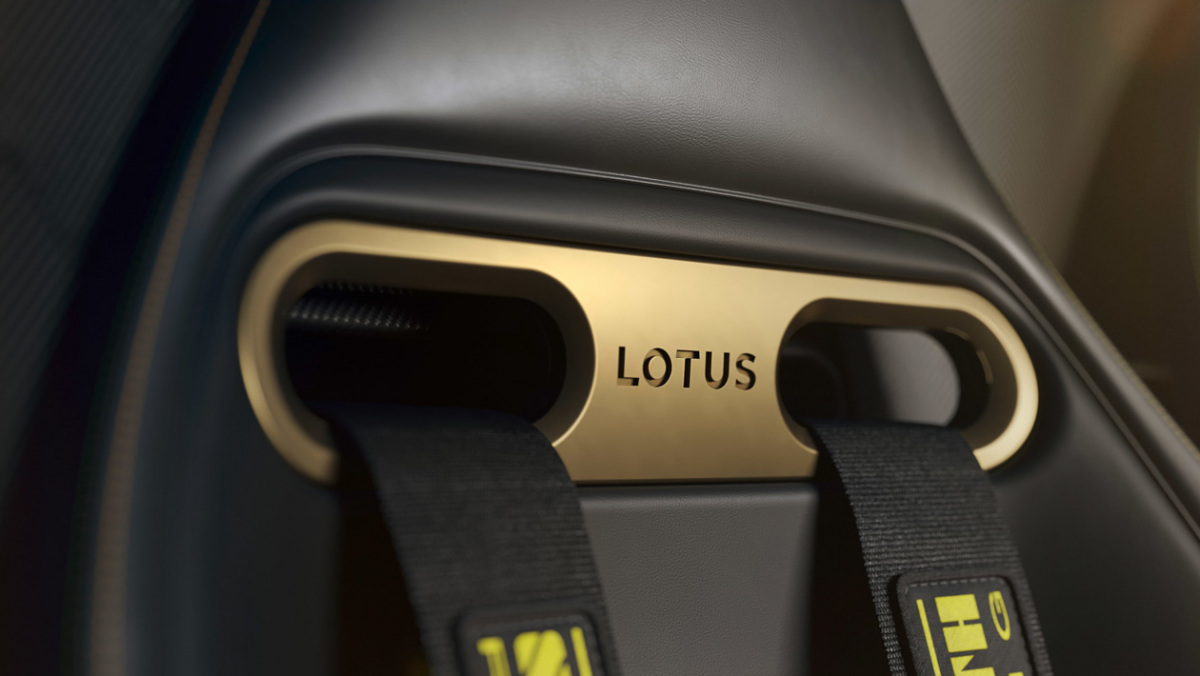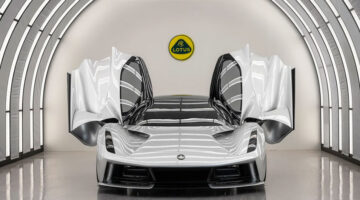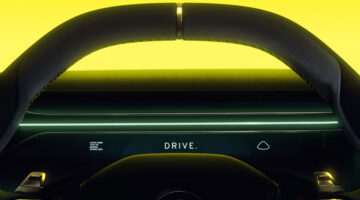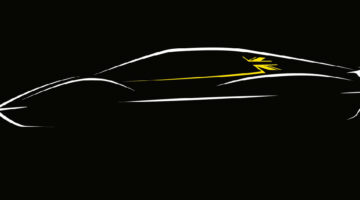New performance details about the Radford Lotus Type 62/2 JPS have been revealed
This is the Radford Lotus Type 62/2, the first new model from the reborn British coachwork company since the brand’s relaunch in the summer of 2021. As its name and form suggests, the 62/2 finds its basis in a Lotus, specifically an Exige S, but differs with completely bespoke bodywork, a unique interior, plus major changes to the chassis and powertrain tuning.
With the project now coming to the end of its development period, ex-Formula One racing driver and co-owner of Radford Jenson Button has taken to the wheel at Lotus’ iconic test track before the first examples go into production in 2022.
> Lotus Emira GT4 revealed ahead of 2022 race debut
Radford will limit the 62/2 production run to just 62 units, numbers of which will be split between three different variants. This will start with a road-biassed base car, middle Gold Leaf model and the range-topping John Player Special. Just 12 units will be built in the flagship JPS specification.
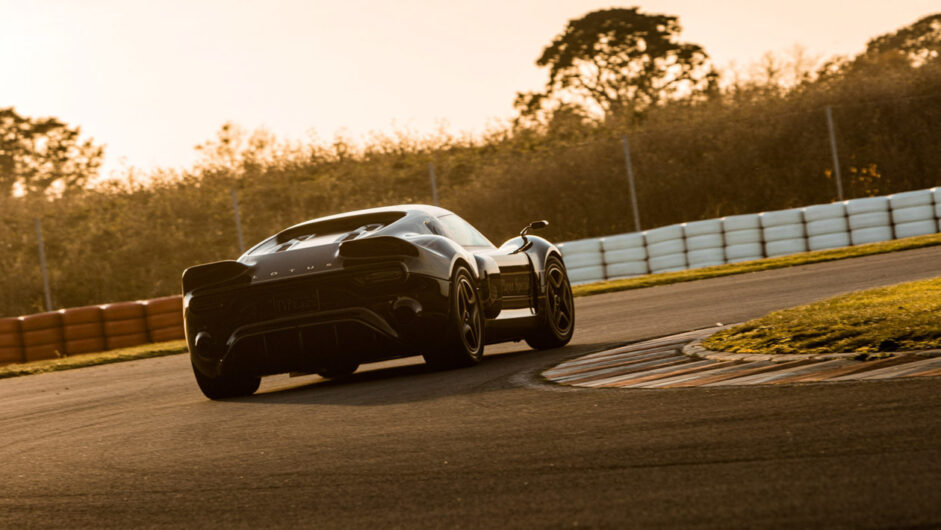
Powertrains
Powering all Type 62/2s is a supercharged 3.5-litre V6 engine available in three states of tune depending on the model. Standard models produce 430bhp, the Gold Leaf 500bhp and the JPS 600bhp. JPS models develop their extra power from the use of reinforced pistons, conrods and camshafts, joined by a larger supercharger for higher outputs.
New details as to the JPS’s performance figures have been revealed, reaching 100kph in 2.9sec, 200kph in 8.4sec and hitting a limited top speed of 300kph. These figures were reached in a prototype example running a six-speed manual transmission.
The engine itself is the same Toyota-derived unit that’s been found in Lotus models since the original Evora, and powers the rear wheels exclusively through either a six-speed manual or seven-speed dual-clutch. Radford has not specified where the dual-clutch transmission will be supplied from – this is an unusual inclusion as currently there’s no V6/dual-clutch combination available within the Lotus range, as the Emira’s V6 is only available with a torque-converter.
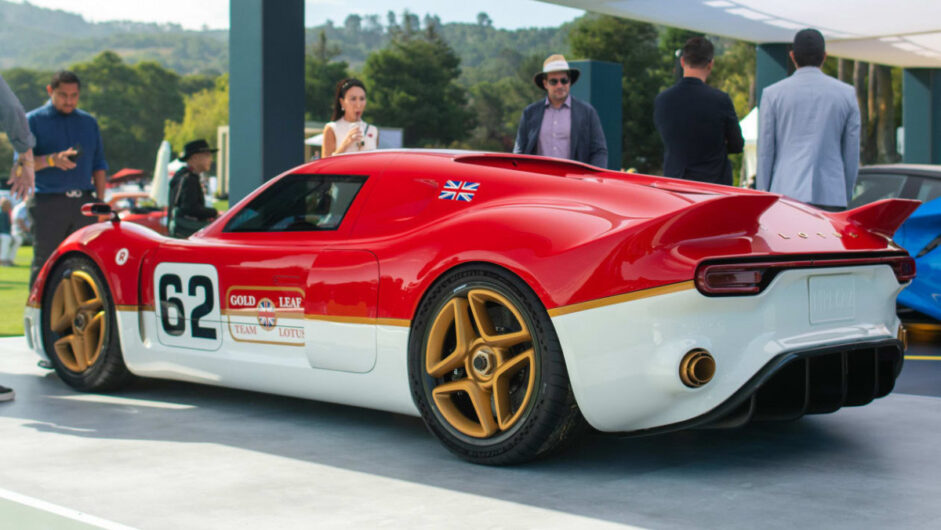
Chassis
Like all Lotus models of the previous generation, the Type 62 is built from a bonded aluminium chassis construction, with composite panels bolted on top. While the car’s basis is found in the Exige S, its fundamental proportions suggest it’s gone through quite a transformation. To help facilitate this change of proportions, Radford has designed its own rear subframe from tubular aluminium, creating that extended rear deck. Yet the biggest difference to normal Lotus models is the bespoke carbonfibre roof, windscreen and firewall structure that partially makes up the passenger cell.
The bodywork’s skin is also constructed from a carbonfibre composite, which is both lighter than aluminium and more flexible in terms of its manufacturing when built in such limited numbers. The composite is utilised across the front clamshell, roof, wings and doors complete with GT40-like roof cutouts. At just 1153mm tall, the Radford’s waist-height stance will likely result in a snug cabin, which has been revealed with elements inspired by high-end watches.
Radford is forecasting that in competition specification, the Type 62/2 will weigh around 1000kg dry, making it substantially lighter than the new Emira, and more closely matched to the V6-powered Exige S. The JPS also features bespoke bodywork in comparison to the other models, reworked to signal its rise in performance, with the front splitter and rear diffuser enlarged for improved downforce and the intakes resculpted to help keep that upgraded V6 cool.
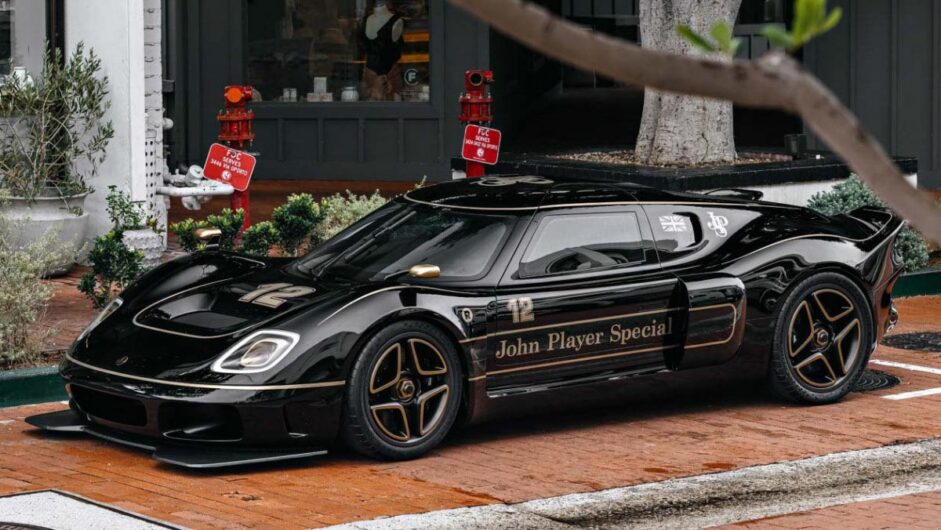
All models run a staggered wheel and tyre package, with base versions running 17- and 18-inch, and the two models above it running bigger 18- and 19-inch options. JPS models will run on Michelin Pilot Sport Cup 2 tyres, lighter 18- and 19-inch carbon composite wheels and AP Monobloc calipers acting upon 360mm carbon ceramic rotors. The suspension design has not been confirmed, but we suspect it’ll feature a similar setup to other Lotus models which run a double wishbone setup at the front, running new adjustable coilovers with a hydraulic nose-lift. The standard and Gold Leaf cars utilise a 4-piston AP Racing setup on the front axle, with the steering totally unassisted.
No detail as to the Type 62/2’s pricing has yet been revealed, but this poses a question. With series production sports cars looking increasingly short of time, does this low-volume coachbuild tradition actually look to be the future for the internal combustion sports car? Whatever the case, expect to see more of this sort of specialised low-volume in the coming years, with more companies like Radford ready and waiting to capitalise on a new market less interested in ultimate performance and more about driving something bespoke.
This article originally appeared at evo.co.uk
Copyright © evo UK, Autovia Publishing

